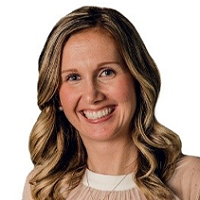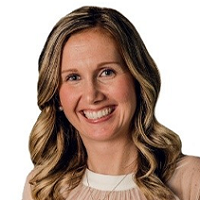Are Your Savings Just Going to Taxes?
Don't give away more than you have to. Put tax-efficient investing strategies to work.


There’s a quote from an old Morgan Stanley ad that gets passed around a lot at tax time: “You must pay taxes, but there’s no law that says you gotta leave a tip.”
Savers, especially, should pay heed to this advice.
Taxes already take a chunk of your earnings — the more you make, the more you pay (in most cases). But that burden can be even heavier for those who save and invest.
From just $107.88 $24.99 for Kiplinger Personal Finance
Become a smarter, better informed investor. Subscribe from just $107.88 $24.99, plus get up to 4 Special Issues

Sign up for Kiplinger’s Free Newsletters
Profit and prosper with the best of expert advice on investing, taxes, retirement, personal finance and more - straight to your e-mail.
Profit and prosper with the best of expert advice - straight to your e-mail.
For example, if you have investments such as mutual funds that aren’t in an IRA/Roth IRA and are generating annual income, that money, in most situations, is 100% taxable. If you didn’t know that, and were surprised when a 1099-DIV showed up in the mail, you may have some re-evaluating to do.
How much of a difference can a tax-efficient portfolio make?
Let’s say there’s a 20-year-old with $100 received from a mutual fund dividend, and he pays 30% (25% federal and 5% state) in taxes. He’s left with just $70.
Next, let’s look at his twin brother’s account. He has assets in the same amount, but it’s been structured in a way so that 50% isn’t taxable. He’s paying $15 in taxes — 30% of $50 — and ends up keeping $85 instead of $70.
For a younger person, that tax savings is important because of the compounding interest; if you’re keeping more, you’re likely investing more, and you’re probably earning more.
Even if these brothers got the exact same rate of return on the exact same dollar amount, the one with the tax-efficient portfolio is going to likely end up with more money in retirement.
Now, let’s go bigger — and older.
Recently, we had a woman come in with a $1.5 million portfolio — all stocks, bonds and mutual funds, no municipal bonds or any tax-advantaged vehicles. All of the money was non-qualified (or non-retirement), and therefore all of the income being created was taxable. Her adviser told her that when she reaches retirement, her portfolio will provide $40,000 in income each year.
But that isn’t a complete picture. I ran the numbers and showed her: With that $40,000 in income, and paying 30% in taxes ($12,000), she’ll really be living on only $28,000.
If she had a 50% tax-efficient portfolio, she’d keep $34,000 instead of that $28,000. Which one would you rather be living on?
Unfortunately, this seems to be the message a majority of the population doesn’t hear. Instead, much of their focus goes to rate of return or that big number at the bottom of those quarterly statements.
But even if the rate of return on your mutual fund is 7% or more, you’re not getting all of that. That’s not the net. And if that big dollar amount is bumping you into a higher tax bracket, you’re not keeping as much as you could.
In the end, it isn’t about how much you make, it’s about how much you keep.
Your financial adviser can help you find tax-wise ways to help shield your assets and still use income-producing assets such as municipal bonds, interval funds, alternative investments, IRAs, real estate and other strategies. Get an analysis of your portfolio to help ensure the money you’ve put away to build a better future doesn’t end up costing you at tax time.
Kim Franke-Folstad contributed to this article.
The article and opinions in this publication are for general information only and are not intended to provide specific advice or recommendations for any individual. Please consult with your tax and/or legal adviser for such guidance.
Examples are for illustrative purposes only and may not be indicative of your situation. Your results will vary.
Securities offered only by duly registered individuals through Madison Avenue Securities, LLC (MAS), Member FINRA & SIPC. Advisory services offered only by duly registered individuals through Brighter Financial Capital Management, LLC, a SEC Investment Advisor. Insurance products and services are offered through Clark & Associates, Inc. Financial Solutions, an affiliated company. Brighter Financial Capital Management, LLC and MAS are separate entities, independently owned.
The appearances in Kiplinger were obtained through a PR program. The columnist received assistance from a public relations firm in preparing this piece for submission to Kiplinger.com. Kiplinger was not compensated in any way.
Related Content
Profit and prosper with the best of Kiplinger's advice on investing, taxes, retirement, personal finance and much more. Delivered daily. Enter your email in the box and click Sign Me Up.

Megan Clark is CEO and executive wealth manager at Clark & Associates Inc. Financial Solutions and is an Investment Adviser Representative, an insurance professional and a Retirement Income Certified Professional®. As a financial adviser, she is passionate about helping families create a holistic financial plan, and she often holds "For Women by Women" informational seminars to reach out to and assist women in pursuing their goals. Clark has been recognized for several achievements, including Forbes Best-In-State Next-Gen Wealth Advisors 2019 and America's Top Women Advisors 2020.
-
 Changes Are Coming for This Invesco Bond Fund
Changes Are Coming for This Invesco Bond FundThe Invesco BulletShares 2026 Corporate Bond ETF's bonds will mature in 2026. Here's what investors should do.
-
 What Science Reveals About Money and a Happy Retirement
What Science Reveals About Money and a Happy RetirementWhether you’re still planning or already retired, these research-based insights point the way to your best post-work life.
-
 7 Retirement Planning Trends: What They Mean for You in 2026
7 Retirement Planning Trends: What They Mean for You in 2026From government shutdowns to market swings, the past 12 months have been nothing if not eventful. The key trends can help you improve your own financial plan.
-
 7 Retirement Planning Trends in 2025: What They Mean for Your Wealth in 2026
7 Retirement Planning Trends in 2025: What They Mean for Your Wealth in 2026From government shutdowns to market swings, the past 12 months have been nothing if not eventful. The key trends can help you improve your own financial plan.
-
 What Defines Wealth: Soul or Silver? Good King Wenceslas' Enduring Legacy in the Snow
What Defines Wealth: Soul or Silver? Good King Wenceslas' Enduring Legacy in the SnowThe tale of Good King Wenceslas shows that true wealth is built through generosity, relationships and the courage to act kindly no matter what.
-
 An Investing Pro's 5 Moves to Help Ensure 2025's Banner Year in the Markets Continues to Work Hard for You in 2026
An Investing Pro's 5 Moves to Help Ensure 2025's Banner Year in the Markets Continues to Work Hard for You in 2026After a strong 2025 in the stock market, be strategic by rebalancing, re-investing with a clear purpose and keeping a disciplined focus on your long-term goals.
-
 Introducing Your CD's Edgier Cousin: The Market-Linked CD
Introducing Your CD's Edgier Cousin: The Market-Linked CDTraditional CDs are a safe option for savers, but they don't always beat inflation. Should you try their counterparts, market-linked CDs, for better returns?
-
 How to Protect Yourself and Others From a Troubled Adult Child: A Lesson from Real Life
How to Protect Yourself and Others From a Troubled Adult Child: A Lesson from Real LifeThis case of a violent adult son whose parents are in denial is an example of the extreme risks some parents face if they neglect essential safety precautions.
-
 To Build Client Relationships That Last, Embrace Simplicity
To Build Client Relationships That Last, Embrace SimplicityAs more automation becomes the norm, you can distinguish yourself as a financial professional by using technology wisely and prioritizing personal touches.
-
 Client Demand Is Forcing Financial Advisers to Specialize: How to Deliver
Client Demand Is Forcing Financial Advisers to Specialize: How to DeliverThe complexity of wealthy clients' needs — combined with AI and consumer demand — suggests the future of financial planning belongs to specialized experts.
-
 A Financial Planner Takes a Deep Dive Into How Charitable Trusts Benefit You and Your Favorite Charities
A Financial Planner Takes a Deep Dive Into How Charitable Trusts Benefit You and Your Favorite CharitiesThese dual-purpose tools let affluent families combine philanthropic goals with advanced tax planning to generate income, reduce estate taxes and preserve wealth.